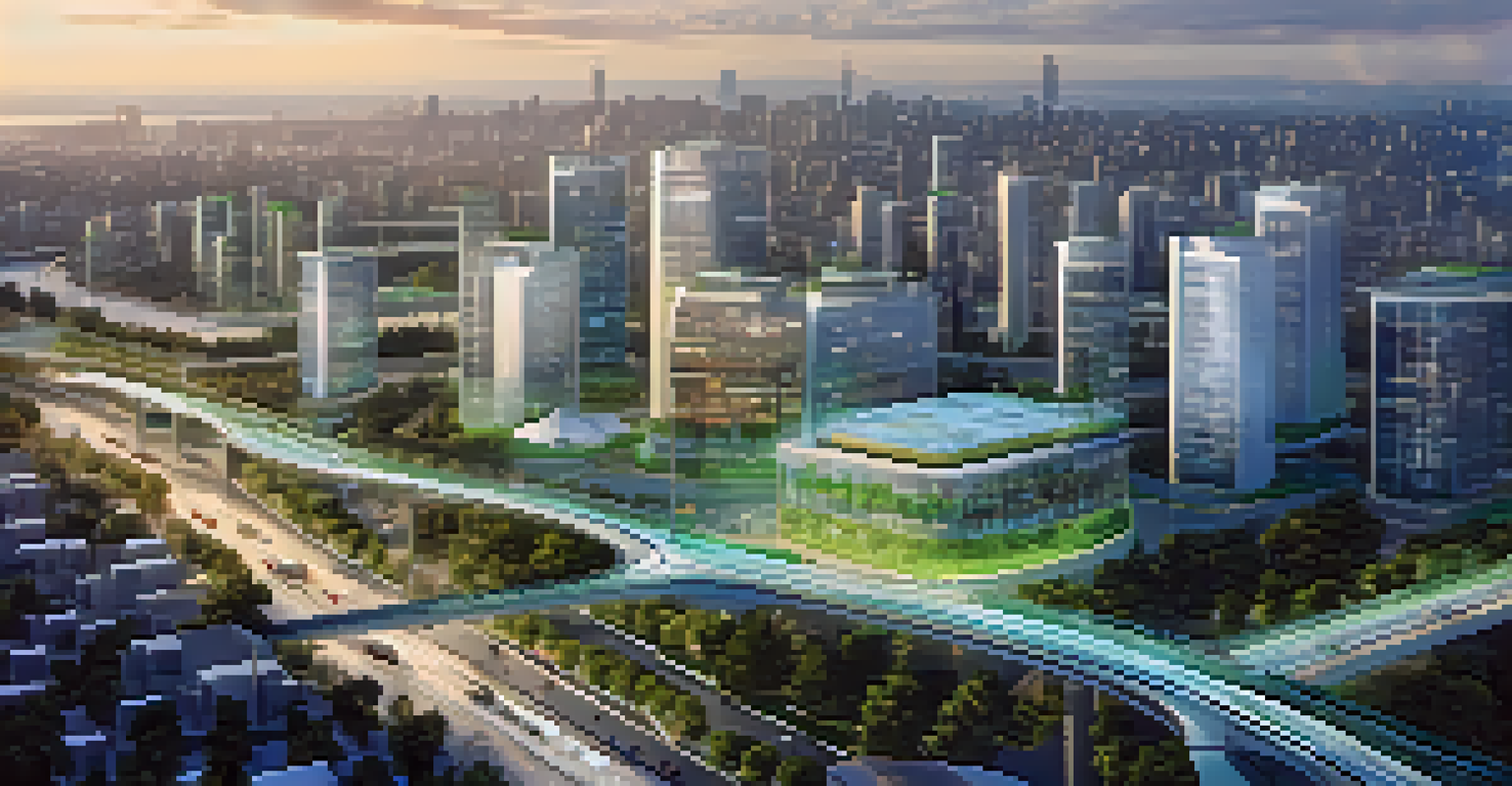Building Smart Communities: The Role of Technology

Understanding Smart Communities and Their Importance
Smart communities are urban areas that leverage technology to enhance quality of life. They focus on sustainability, efficient resource use, and improved public services. This interconnectedness allows residents to engage more actively in their community.
The future belongs to those who believe in the beauty of their dreams.
The concept isn't just about high-tech gadgets; it's about creating environments where technology supports social interactions and community-building. For instance, smart traffic systems reduce congestion, leading to cleaner air and happier commuters.
Ultimately, smart communities aim to foster a sense of belonging while addressing urban challenges like overcrowding and resource management. By integrating technology thoughtfully, these communities can thrive and adapt to future needs.
The Role of Data in Smart Community Development
Data is often described as the lifeblood of smart communities, providing insights that drive decision-making. By collecting and analyzing data from various sources—like traffic patterns or energy usage—cities gain a clearer understanding of their needs.

For example, a city might use data analytics to determine the best locations for public parks or community centers, ensuring they are easily accessible to residents. This not only improves community well-being but also fosters greater public engagement.
Smart Communities Enhance Quality of Life
By leveraging technology, smart communities focus on sustainability and improved public services, fostering active resident engagement.
However, it's crucial to handle this data responsibly, ensuring privacy and security for all citizens. Transparency in how data is used builds trust between communities and their local governments.
Smart Infrastructure: Building the Foundation
Infrastructure is the backbone of any community, and in smart communities, it is designed to be both efficient and adaptive. Smart grids, for instance, optimize electricity distribution and reduce outages, leading to a reliable power supply.
Sustainability is no longer about doing less harm. It's about doing more good.
Moreover, integrating IoT (Internet of Things) devices into infrastructure allows for real-time monitoring and maintenance. Imagine streetlights that adjust their brightness based on pedestrian traffic—this not only saves energy but enhances safety.
As cities continue to grow, smart infrastructure will be essential in managing urban challenges like traffic congestion and waste management. The future of urban living hinges on how well we can innovate our physical spaces.
Technological Innovations Driving Change
From AI to renewable energy solutions, various technologies are transforming how communities operate. For example, AI-driven analytics can help city planners predict future growth and infrastructure needs, ensuring resources are allocated efficiently.
Additionally, advancements in renewable energy sources, such as solar panels and wind turbines, allow communities to reduce their carbon footprint significantly. Smart energy solutions not only benefit the environment but also reduce costs for residents.
Data Drives Smart Community Decisions
Data collection and analysis empower cities to make informed decisions that enhance community well-being and resource management.
These technological innovations create a ripple effect, inspiring other sectors like healthcare and education to adopt smarter solutions. The synergy between these fields can lead to a more holistic approach to community development.
Enhancing Citizen Engagement through Technology
Technology plays a vital role in fostering citizen engagement in smart communities. Tools like mobile apps and online platforms empower residents to voice their opinions, report issues, and participate in decision-making processes.
For instance, a community app could allow residents to vote on new projects or initiatives, fostering a sense of ownership and pride in their neighborhood. This active participation leads to more responsive governance and stronger community ties.
By encouraging engagement, technology helps build a culture of collaboration where everyone feels invested in the community's future. This shared responsibility is crucial for the success of smart community initiatives.
Sustainability and Smart Communities: A Perfect Match
Sustainability is at the core of smart community initiatives, emphasizing the need to balance economic growth with environmental care. Technologies like smart waste management systems help minimize waste and promote recycling, making communities cleaner and greener.
Moreover, sustainable transport solutions, such as electric buses and bike-sharing programs, reduce reliance on fossil fuels. This not only decreases pollution but also improves the overall health of residents.
Sustainability is Central to Smart Growth
Integrating sustainable practices in smart communities ensures a balance between economic growth and environmental responsibility for future generations.
Building smart communities with sustainability in mind ensures that future generations inherit a thriving planet. It's about creating a legacy of responsible living and resource management.
Challenges and Considerations for Smart Communities
Despite the benefits, building smart communities comes with its own set of challenges. Issues like funding, data privacy, and technological disparities can hinder progress, making it essential to address these concerns proactively.
For example, not all residents may have equal access to the technology needed to engage fully in smart initiatives. Bridging this digital divide is crucial for ensuring inclusivity and equal participation.

Moreover, ongoing community engagement and education are vital to overcoming resistance to change. By involving residents in the development process, cities can create smart solutions that genuinely reflect their needs and aspirations.